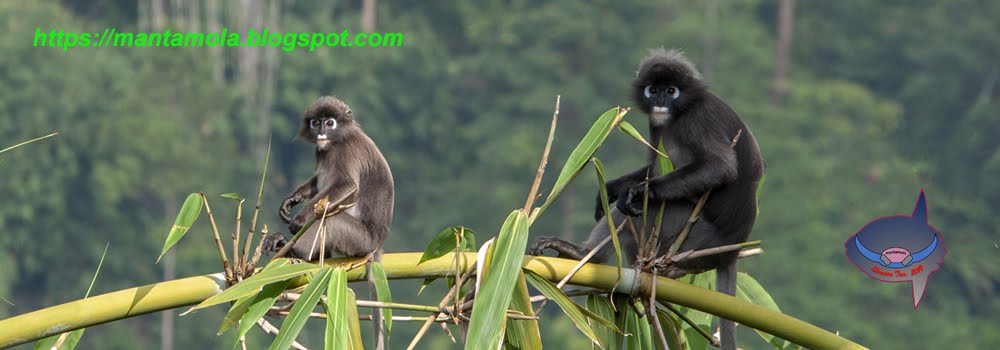I have never been bird watch at any of the area within the Wallacea boundary and Sulawesi is within the Wallacea boundary. Since this is going to be my first birding trip in Wallacea, any birds that we saw could be an endemic species!
We arrived at the reserves around 3pm and after settle down and rest for an hour, we set off at 5pm for our 1st night walk with our Ranger. The first mammal that we came across was the crested black macaques. It was about time for them to settle down and rest for the day. We move on deeper into the forest to look for the elusive yet super cute Tarsiers. Our ranger ask us to stop and wait around a big tree and told us to just wait till the surrounding get dark. Since Tarsiers are nocturnal animals, they will leave their nest for hunting at night. Suddenly we heard a rustling of leaves and branches in the nearby bushes. The Park Ranger quickly turned his torch in the direction of the noise, and yes! Is the Tarsiers!! They are so cute, is an amazing experience to be able to see this elusive tiny creature up close! After about few minutes, the ranger switch off the light to let the Tarsiers carry on their activities and switch the torch back on after the Tarsiers disappeared in the dense forest.

While on the way back to our cabin, the ranger show us the 1st bird of the trip! An endemic Sulawesi Scops-owl (Otus manadensis)!

Sulawesi Scops-owl (Otus manadensis)
I set my ISO to the highest to avoid using flash. I took a few shot as the ranger shine on the owl. The light from the torch is just good enough for me to focus and make some shots without causing too much stress for the bird. We sleep rather early on the first night as we will be going to the forest again the next morning around 4.30am.
We set off at 4.30am sharp and were greeted by flocks of Great Eared Nightjar.
 We were at the forest all the way till about 1pm before we go back to our cabin. We were out for birding again in the afternoon at 4pm but this time round we were on the boat, travel around the coastal area into the mangrove. As we were too tired, we didn’t go for night walk and check out the next morning.
We were at the forest all the way till about 1pm before we go back to our cabin. We were out for birding again in the afternoon at 4pm but this time round we were on the boat, travel around the coastal area into the mangrove. As we were too tired, we didn’t go for night walk and check out the next morning.
It was an fantastic birding trip. We were there for just 2 days and more than 40 species of birds have been observed with more than half of them endemic. These are some of the birds that we saw in just 2 days. Silver-tipped Imperial Pigeon (Ducula luctuosa)
Silver-tipped Imperial Pigeon (Ducula luctuosa)
 Green-backed Kingfisher (Actenoides monachus)
Green-backed Kingfisher (Actenoides monachus) Knobbed Hornbill (Rhyticeros cassidix)
Knobbed Hornbill (Rhyticeros cassidix) Not difficult to look for Yellow-billed Malkoha (Phaenicophaeus calyorhynchus), as they are always nearby Crested Black Macaques.
Not difficult to look for Yellow-billed Malkoha (Phaenicophaeus calyorhynchus), as they are always nearby Crested Black Macaques. Crested Black Macaques. When they move from tree to tree, insect are flush out of the tree and exposed them to the waiting Yellow-Billed Malkoha.
Crested Black Macaques. When they move from tree to tree, insect are flush out of the tree and exposed them to the waiting Yellow-Billed Malkoha.
White-breasted Wood-swallow (Artamus leucorhynchus) I have no idea what bird is this with lots of worn out feathers.
I have no idea what bird is this with lots of worn out feathers.
 Another sub-species of Olive-backed Sunbird (Nectarinia jugularis plateni )
Another sub-species of Olive-backed Sunbird (Nectarinia jugularis plateni )

 Chestnut Munia (Lonchura atricapilla)
Chestnut Munia (Lonchura atricapilla)
No comments:
Post a Comment